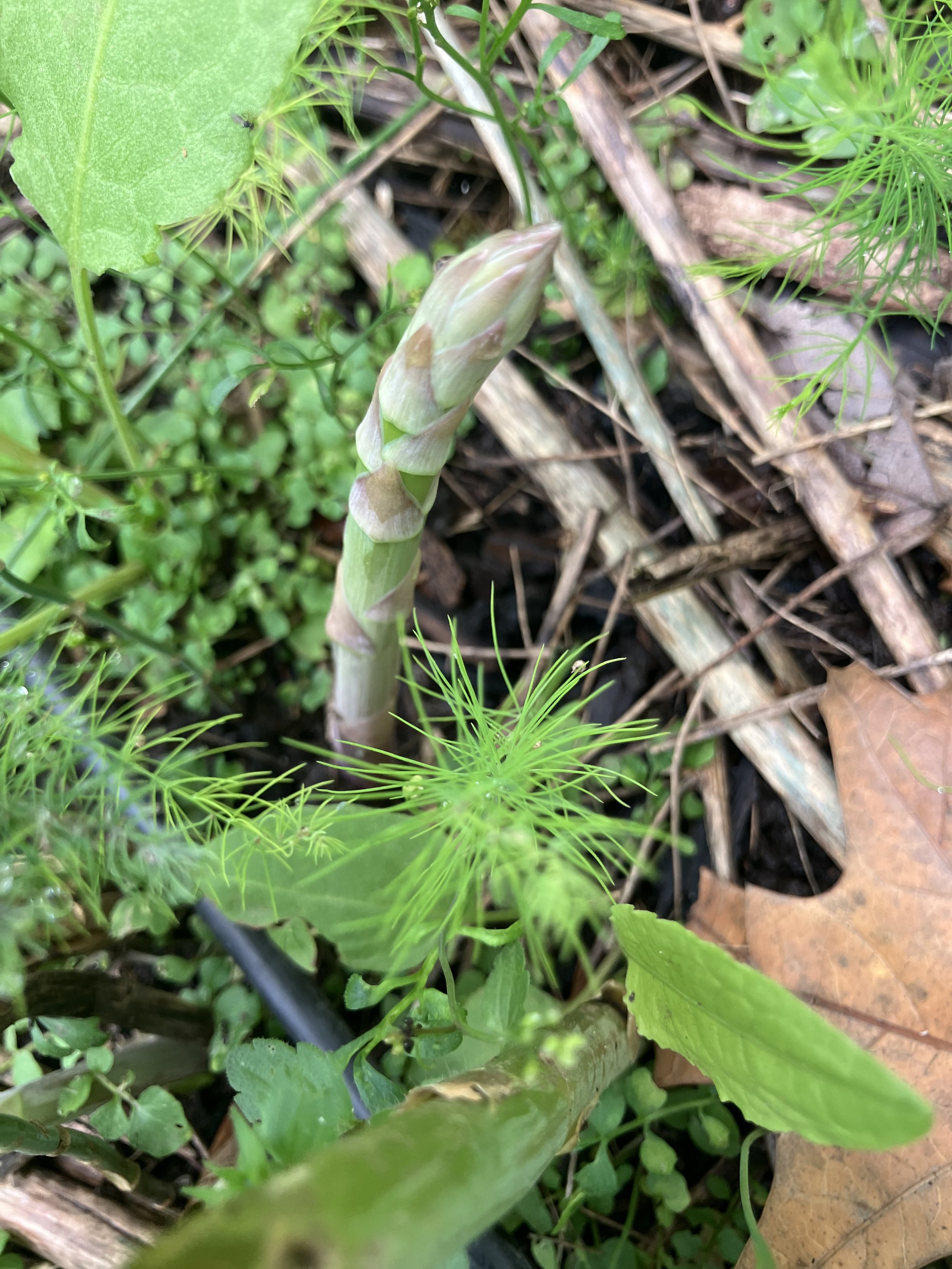Asparagus in the Garden
Asparagus shoot
Planting asparagus crowns has turned out to be one of the best plants I have planted in my garden, other than my strawberries and red raspberries. Asparagus is a perennial plant, meaning it comes back year after year. It has been extremely low maintenance, which when you have a busy household and may from time to time neglect your garden, is amazing! I planted my asparagus crowns five years ago. I was a little nervous. I started my garden five years ago when we moved into our forever house. Prior to that I had only attempted a few random tomato and pepper plants occasionally in the summer, and my parents certainly didn’t do much gardening when I was growing up. I’m not an expert, but I love planting new things and watching plants grow.
Kids love eating the asparagus raw, right from the garden, and the taste is unbeatable.
The garden is a wonderful place for kids to spend time learning about food. My kids can’t contain themselves when they get to try a fruit or vegetable that they helped plant. Elijah was eating kale leaves with enthusiasm while we picked strawberries this morning. He also loves snapping the asparagus off. With five kids, we need to expand our asparagus beds, as it rarely makes it way into the kitchen from the garden. Asparagus is simple side for a quick dinner. I also love it in an asparagus quiche or in my spring greens salad. Growing asparagus in my garden is both economical and sustainable. Organic asparagus can be quite pricey, and typically travels a great deal to arrive at the grocery store.
Asparagus spear poking through the ground. As perennial plants, asparagus comes back year after year.
How to Plant
I planted my original 1-year old crowns in one of my raised garden beds. I have sixteen 4’ by 8’ raised beds in my garden. I made a trench on both long sides of the raised beds, around 8 inches deep and close to a foot wide. I planted 12 crowns total, 6 on each side, 18 inches apart. I covered them with a couple inches of soil. Slowly as they began producing shoots, I covered with additional soil, similar to potatoes. I really just followed the instructions from the company I ordered them from.
The first year you just let them grow, and do not harvest any asparagus spears. The second year I took a few spears, but left most of them to grow. The third year, I took about half. Last spring and this year, I have been taking most but will leave one or two to grow and fern. The spears come up out of the soil. When they are around 12-18 inches up out of the ground and before they fern out, simply snap them off. This year I have probably harvested around 2-3 pounds from my plants. They seem to be slowing down a little, but I was surprised to find I get spears all summer.
Since we find ourselves still not having enough asparagus to cook with in meals, I am planting a couple of new beds this spring. One will be in the ground in the fenced in portion of our garden, and one will be outside the fenced area of the the garden. I don’t want to have more than one of my beds committed to asparagus. Instead of ordering new plants, I am digging up some of my new plants I have from my existing plants. Asparagus have both male and female plants, both produce flowers which are fertilized by pollinators. The female plants produce red berries when their flowers are pollinated. I now have lots of baby asparagus plants in my asparagus bed. Some that I am digging up are at least a year old already, others are new. Just make sure you are careful not to damage the crown when digging them up.







